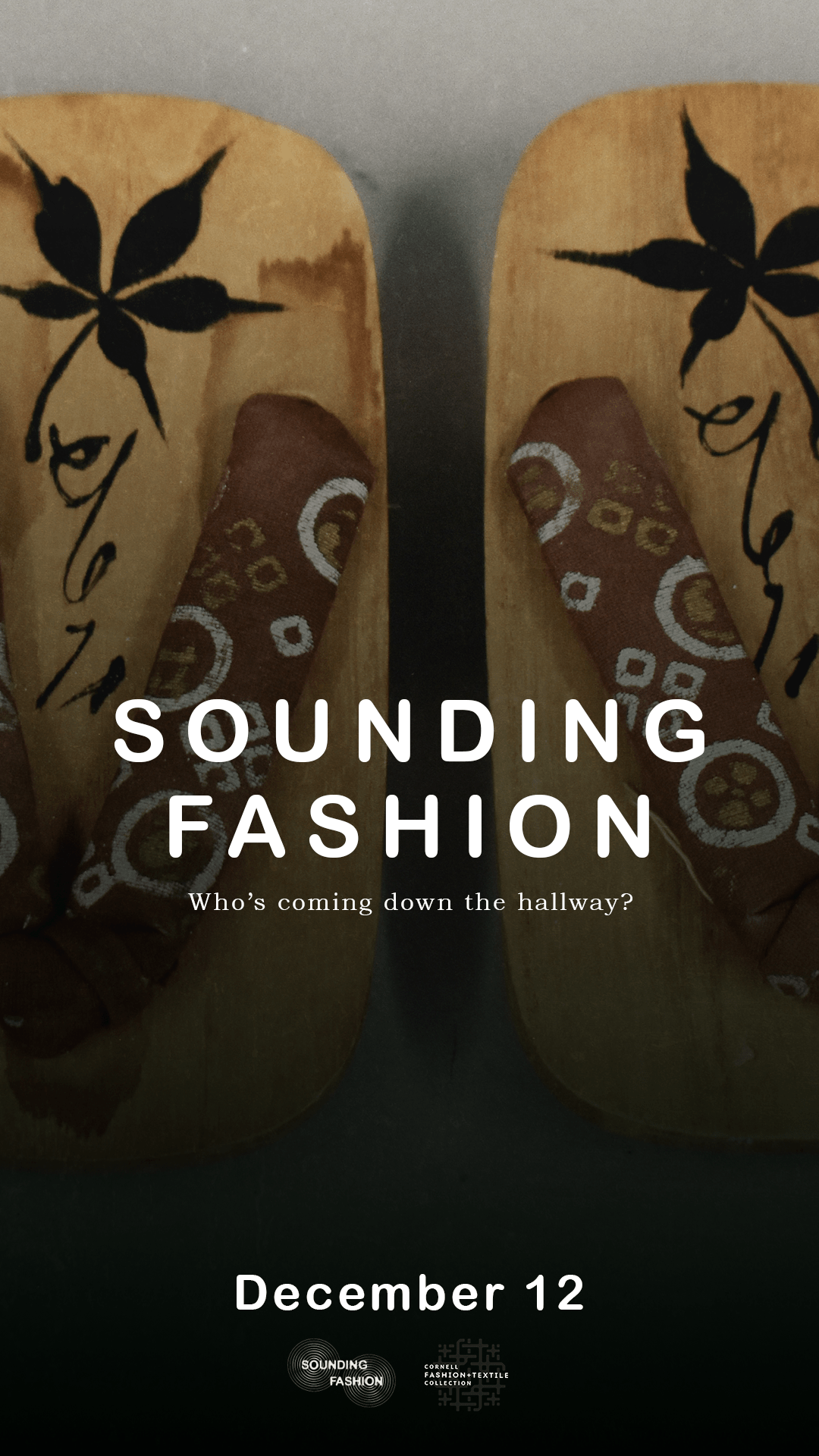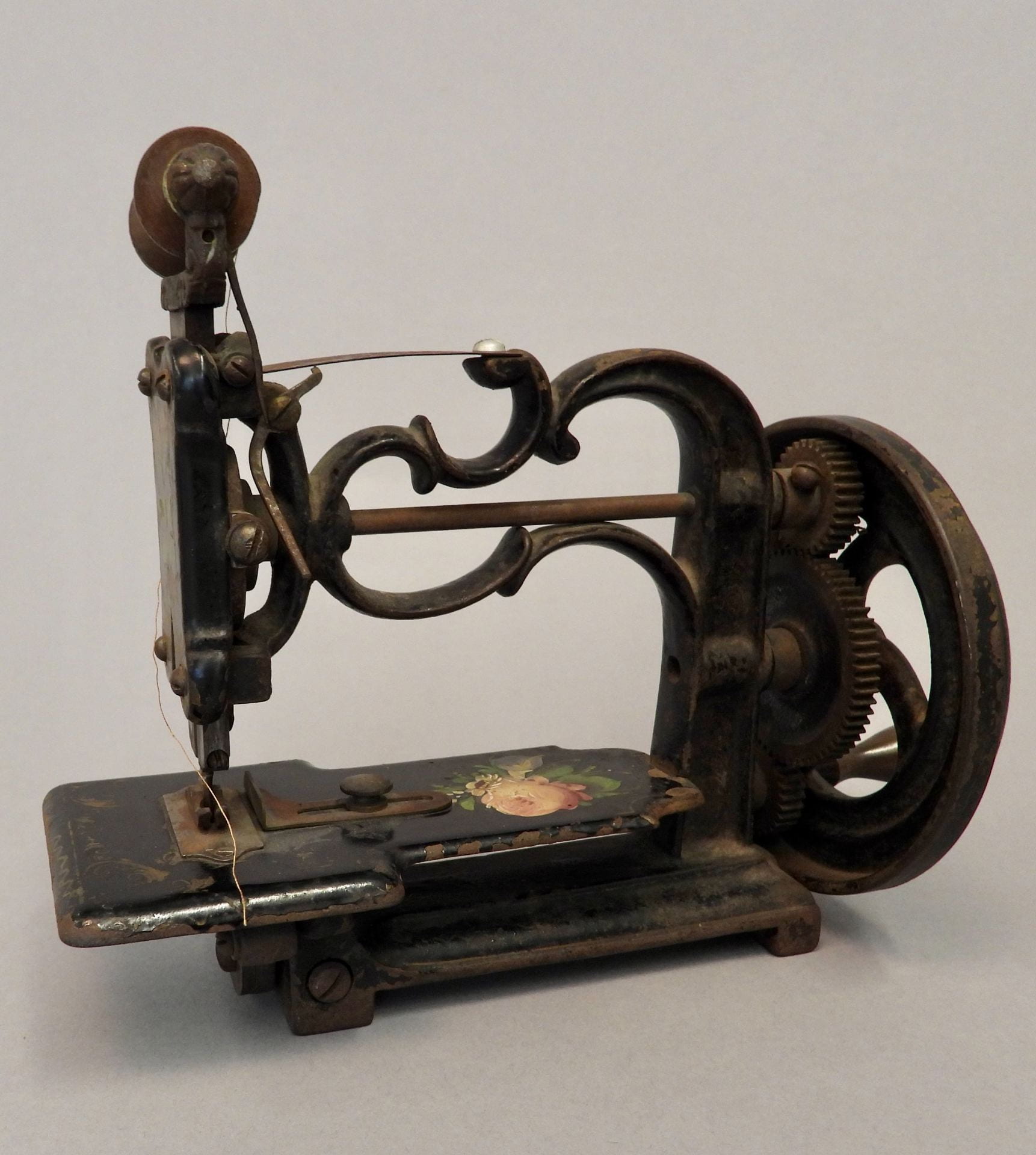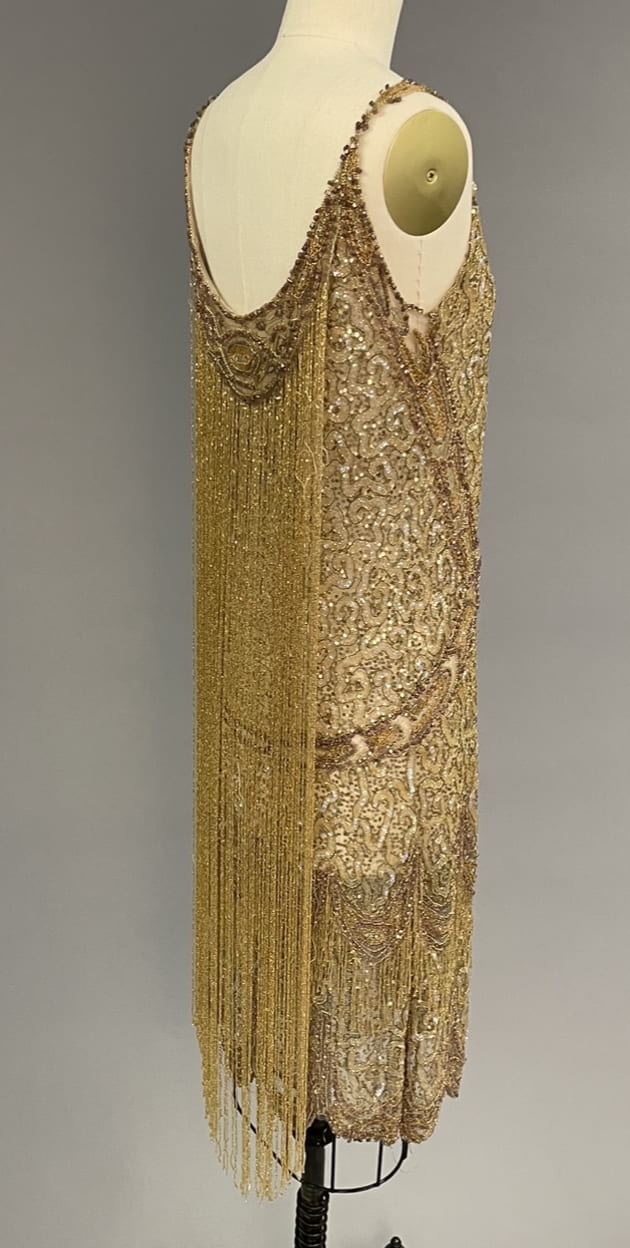Fashion resonates. Sounding Fashion voices presence, performance, and disturbance through a chorus of fashion objects.
.
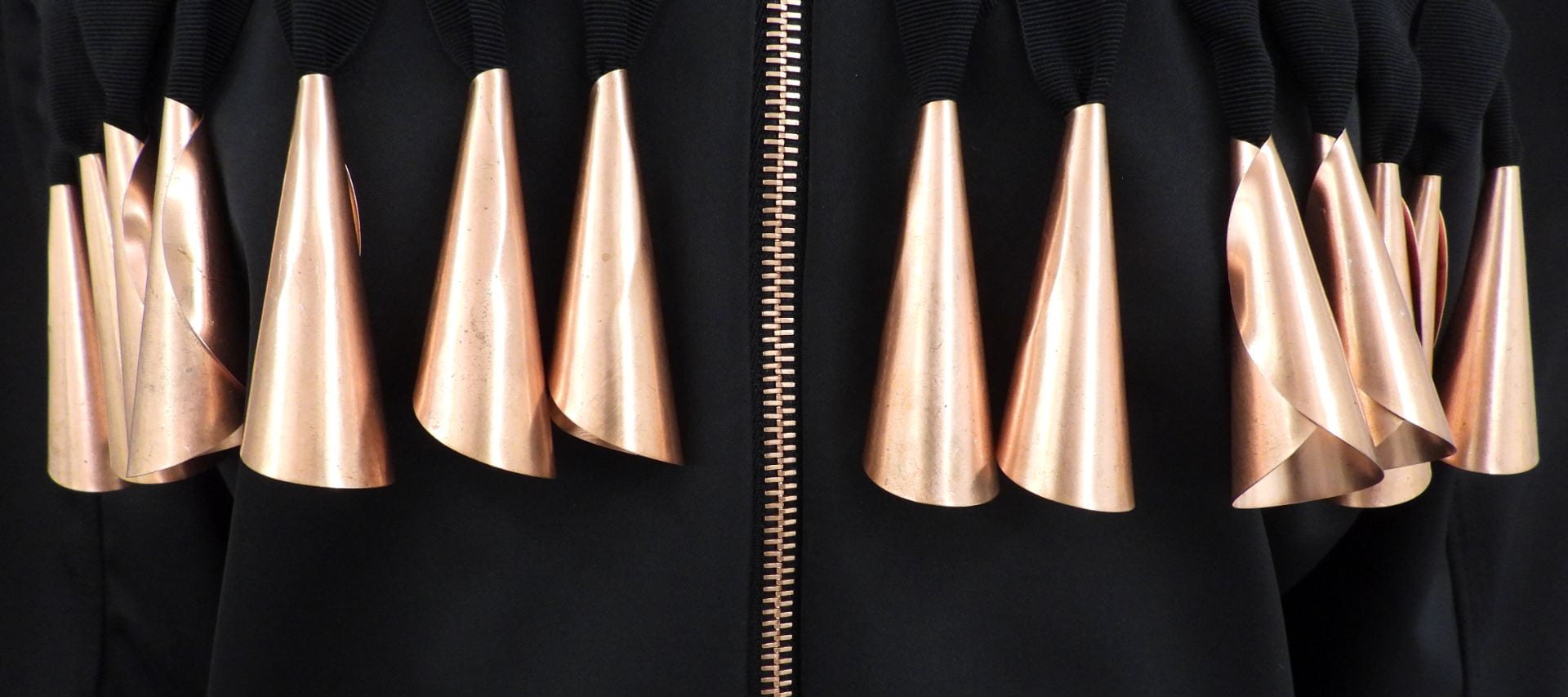
Anishinaabe people were gifted the jingle dress, or ziibaaska’iganagooday. To honor this history, Anishinaabe Mohawk designer Lesley Hampton and Cree stylist Scott Wabano created the HAMPTON X WABANO JACKET during the COVID-19 pandemic in 2020. On loan from Shawkay Ottmann.
FOR IMMEDIATE RELEASE
Sounding Fashion opens on December 12, 2022 with reception and tour with curators at 12:30 PM.
Location: Level T Display Cases, Human Ecology Building, Cornell University
Hours: 7:30 AM – 8 PM Monday – Thursday & 8 AM – 6 PM Friday – Sunday (Please note that the building will be closed to the public during the university break, Dec. 24 – Jan. 2)
Sounding Fashion, a new exhibition in the Cornell Fashion + Textile Collection, showcases garments and accessories that create noise and reverberate. The sounds come in many forms: the echoes of production, where machines and workers transform materials into products; the cacophonous protest, where clothing amplifies voices making change in the world; the resonance of embodied presence and the soundscape that comes with being and moving in clothing; and in performances that create the rhythm of cultures. The exhibition is curated by students in FSAD 6451: Curating Fashion Exhibitions, and was proposed by Theodora Serbanescu-Martin, PhD candidate in Musicology, who also recorded and produced the live sounds of many garments and accessories on display.
The production process is clothing’s first sound. As fashion comes into being through human labor and machines, every stage of transformation makes noise. The Production section of the exhibit includes materials on loan from the Kheel Center for Labor-Management Documentation and Archives along with materials from the CF+TC, including sewing kits and a mini sewing machine among other aspects of garment manufacturing.
Protest is shown through objects that make commentary about social or political issues. A blue and white batik “non” patterned collared shirt that was made in the Republic of Guinea in the months leading up to the 1958 Constitutional Referendum. The phrase “non” refers to the vote: to vote no, or “non” in French, would mean to decolonize and become independent from France. The statement is loud, even if it does not necessarily result in a sound wave. Student curator Jenine Hillaire PhD ‘25 calls the shirt “a resounding chant for independence.”
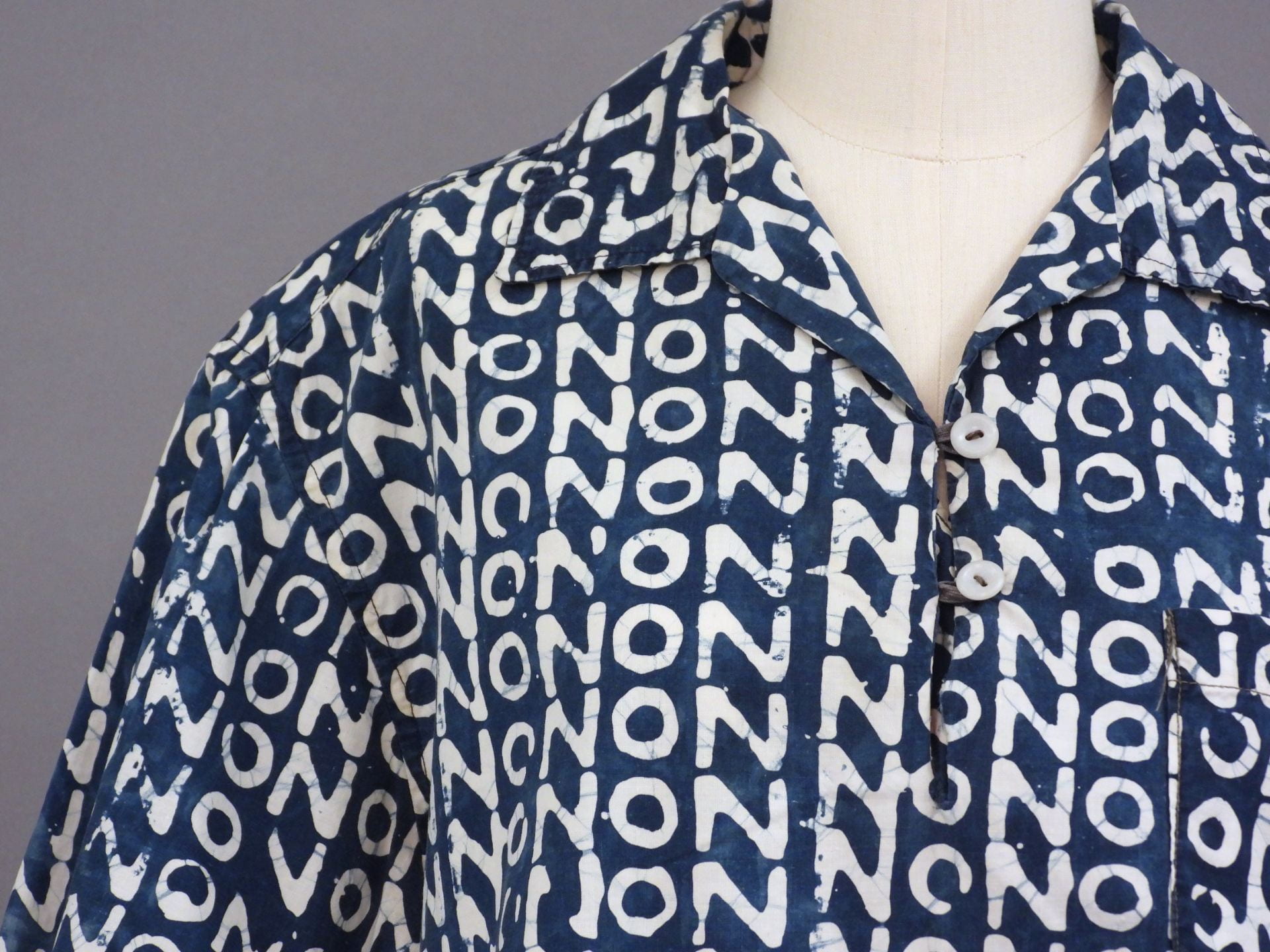
Batik print that says “Non,” and worn in the months leading up to the 1958 Guinean Constitutional Referendum.
Presence, another theme in the exhibit, explores how the sounds that fashion makes expands the body to take up audible space. The sounds of these garments were recorded, and visitors may listen to each or view the visual waveform representation of the sound alongside the garment. There are three dresses from different time periods that focus on the feminine rustling of skirts. Among them is a bright purple silk dress from the 1850s that is both visually and auditorily loud. Apurva Pandey, MA ‘23, worked with Dr. Larissa Shepherd to test the garment using Fourier-transform infrared spectroscopy (FTIR) and liquid chromatography–mass spectrometry to analyze the fiber content and dye compounds. This garment, created over 170 years ago, echoes the intermingling of the fashionable silhouette of the 1850s defined by a small waist, drooping shoulders, and the rustling voluminous skirt with the significant advancements in chemistry and technology, which greatly influenced fashion.
Presence also includes a collection of dresses that have allowed women to take up more space as the sound of embellishments and materials jingle, crackle or clink. A dress from the 1920s, with layers of fringed beads, could create a rhythm to match that of a jazz song as the wearer danced. A dress from Jill Stuart’s 2012 collection produces a metallic rattling. Stuart’s dress was inspired by a different beat, that of the distinctive world of experimental punk music.
An array of heels and other footwear are also on display as examples of resonant fashion. The oldest pair is from about 1790 and includes a heel that clicks. Likewise, Japanese wooden sandals, known as Geta 下駄, make a distinctive clacking sound called karankoron. A pair of heels by the brand American Girl was famous for damaging floors as its alligator-like heel edges clattered down hallways. Another heel, by Miller & Sons, was removable and allowed the wearer to “change their heels as easily as they change their minds.” The nails in the heel would also create a metallic click with each step as the soles were worn away.
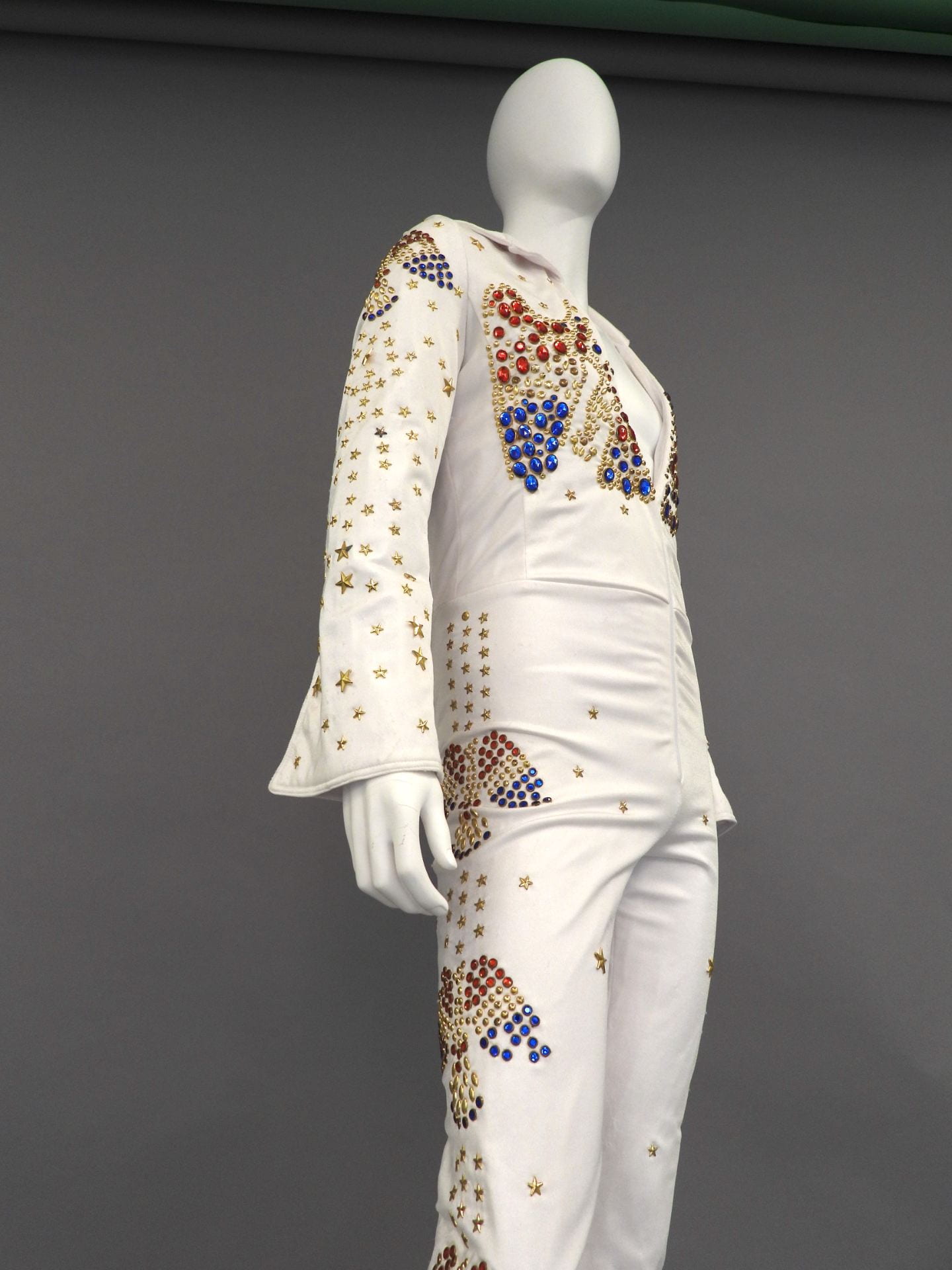
Elvis Presley, the King of Rock and Roll, made history with the first satellite-broadcast concert, which took place in Hawai’i 1973. He wore a white bell-bottom jumpsuit embellished with a bald eagle of red, gold, and blue studs and this costume was nicknamed the “Aloha Suit” ever since. This copy of the ensemble was likely worn by an Elvis impersonator.
The Performance section of the exhibit includes costumes that sound and were worn for concerts, dances, and other events, along with band t-shirts that amplify the impact of a performer. An Elvis impersonator costume, known as the “Aloha suit” after his 1973 concert in Hawaii, does not make sound itself, but the iconic look echoes through history. A classical Odissi dance outfit from India features anklets with three rows of bells that harmonize with the music as the body moves in time.
The rustle of a skirt. The jingle of a beaded gown. The click-clack of heels. The squeak of a vinyl jacket. Clothing makes sound once embodied, but sound was always part of the story. From the early moments of factory production to everyday embodiment, clothing constantly requires and creates sound. We are often habituated to this everyday reality or disconnected from the production side of clothing. We decided to bring attention back to the potential sounds of fashion, both literally, through materials, or figuratively, through empowerment and protest.
Sounding Fashion invites visitors to listen to fashion, and leads us to wonder: what other senses might our clothing evoke?

